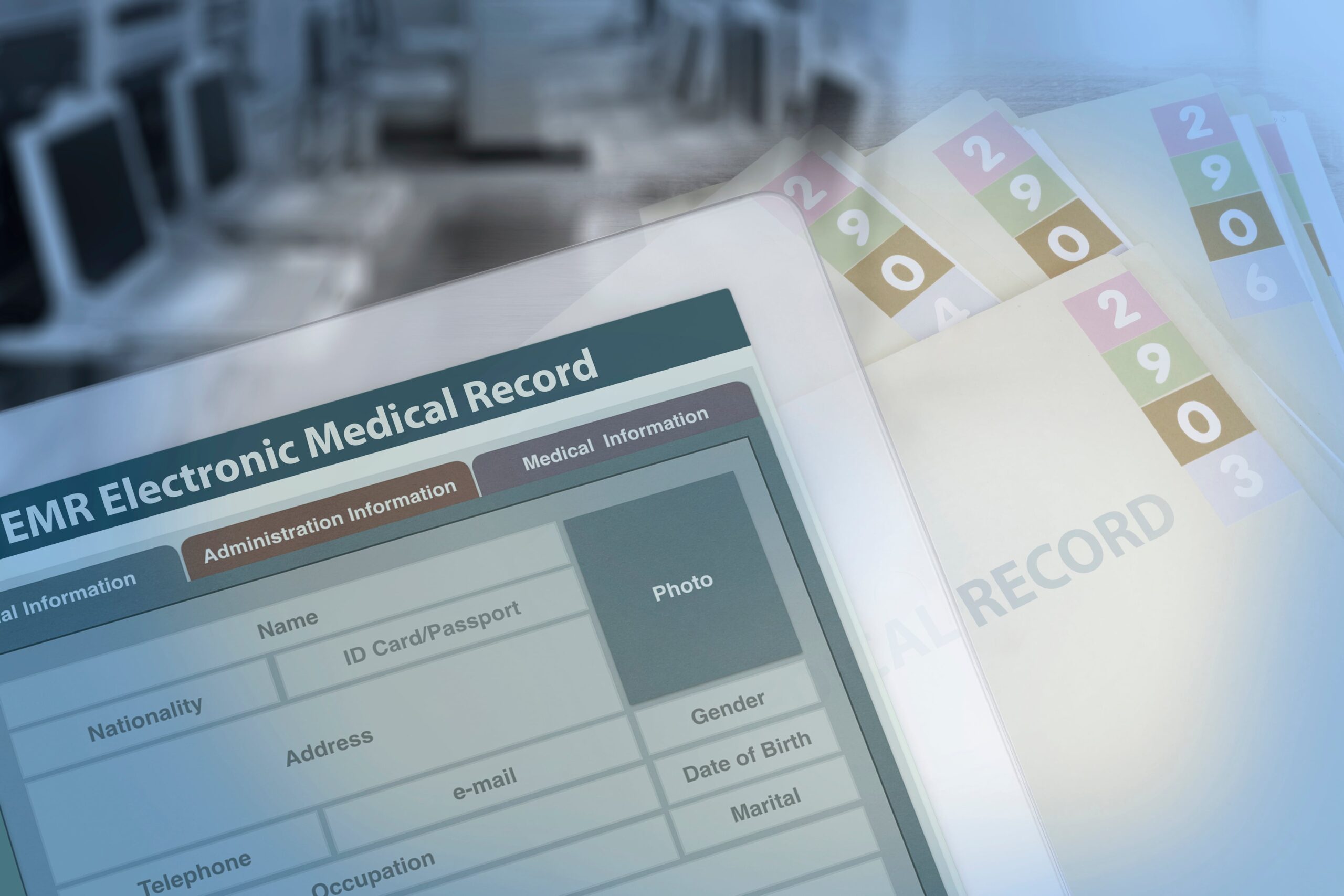All-in-One EMR Solutions for Ontario Clinics: What to Expect
Ontario’s healthcare system is evolving rapidly, demanding efficiency, collaboration, and accuracy at every level. Clinics that once relied on paper...

Ontario’s healthcare system is evolving rapidly, demanding efficiency, collaboration, and accuracy at every level. Clinics that once relied on paper records or disconnected digital systems now face the challenge of managing patient data, billing, and scheduling in one place. The growing complexity of healthcare delivery has made unified technology solutions no longer optional—they’re essential for consistent, compliant, and patient-centered operations.
An integrated electronic medical record software brings all core functions—clinical documentation, OHIP billing, scheduling, and data management—under one secure platform. Instead of switching between multiple systems or handling manual processes, providers can manage the entire patient journey seamlessly. For Ontario clinics, all-in-one EMR solutions are redefining how practices operate—creating a connected, efficient ecosystem that saves time, minimizes errors, and enhances patient care.
What Does “All-in-One” Really Mean for Ontario Clinics?
“All-in-one” doesn’t just refer to convenience—it signifies complete digital integration. An all-in-one EMR system consolidates patient records, billing, scheduling, reporting, and compliance tools within a single interface.
For Ontario clinics, this means that front-desk staff, physicians, and billing administrators can access the same real-time data without duplication or manual entry. Tasks like managing appointments, generating claims, and updating patient histories are connected and automated. The result is a more efficient workflow where information flows seamlessly between departments, reducing errors and improving operational transparency.
By adopting such unified systems, clinics can focus more on care delivery and less on administrative management.
Centralized Patient Records and Real-Time Access
Fragmented data is one of the biggest barriers to coordinated care. In many clinics, information may reside across separate systems or physical files, making it difficult to access when needed. An all-in-one electronic medical record system solves this challenge by centralizing all patient data into one digital repository.
Clinicians can instantly view a patient’s medical history, medications, allergies, lab results, and treatment plans. This level of accessibility improves diagnostic accuracy and continuity of care, especially in multi-provider settings.
Real-time data access also benefits administrative teams, who can verify insurance details, update contact information, and manage appointment histories without switching systems. By connecting all clinical and administrative functions through one secure EMR, clinics can operate more cohesively and make informed decisions faster.
Built-In OHIP Billing and MCEDT Integration
Billing and claim management are often pain points for Ontario clinics. Manual submissions, coding errors, or outdated workflows can delay payments and trigger audits. An all-in-one EMR system with built-in OHIP and MCEDT integration eliminates these hurdles.
Clinicians can select the correct billing codes directly from the EMR during patient encounters, and the system automatically validates claims before submission. Integration with the Ministry of Health’s OHIP system allows for direct electronic submission, real-time claim tracking, and instant reconciliation of remittance advice.
This automation reduces administrative overhead, minimizes rejections, and ensures that clinics maintain compliance with provincial billing standards. By combining patient records and billing in one system, every claim is accurate, traceable, and easy to manage.
Smart Scheduling and Automated Reminders
Efficient scheduling plays a critical role in patient satisfaction and clinic productivity. Traditional appointment management often involves manual tracking, double bookings, or missed follow-ups—all of which waste time and reduce operational efficiency.
Modern EMR solutions incorporate smart scheduling tools that automatically optimize appointment slots, manage cancellations, and send automated reminders to patients. Staff can access a unified calendar that displays multiple providers’ schedules, resource availability, and appointment histories.
Automated reminders through SMS or email reduce no-shows, while integrated scheduling analytics help clinics identify peak hours and resource bottlenecks. With these tools, Ontario clinics can ensure smoother patient flow and better time management for both staff and providers.
Enhanced Communication and Collaboration Tools
Communication gaps between clinicians, support staff, and patients often lead to inefficiencies and frustration. An all-in-one electronic medical record system bridges this gap through secure messaging, internal communication tools, and patient portals.
Providers can exchange notes, treatment updates, or referrals within the EMR platform itself—eliminating the need for external emails or fragmented communication. Patient portals allow individuals to view lab results, receive instructions, or request appointments, creating a transparent communication channel between the clinic and the patient.
This streamlined communication fosters collaboration among care teams and ensures that every stakeholder—physician, nurse, or administrator—has access to the same accurate information.
Compliance and Data Security for Ontario Clinics
Data protection and compliance are fundamental requirements for any Ontario clinic. Patient information falls under PHIPA (Personal Health Information Protection Act), which mandates strict confidentiality and security measures. An all-in-one EMR system addresses this through built-in compliance tools and robust data encryption.
Sensitive data is stored securely on Canadian servers, ensuring compliance with local data residency laws. Role-based access control ensures that only authorized users can view or modify specific records, protecting patient confidentiality.
Regular system updates and audit trails provide further assurance that data remains secure and traceable. With these compliance-focused measures, clinics can operate confidently, knowing their digital workflows meet Ontario’s privacy regulations.
Analytics and Reporting for Better Clinic Insights
Data-driven insights are key to improving clinic performance. All-in-one EMR solutions provide comprehensive analytics and reporting features that track everything from patient visits to billing efficiency.
Administrators can view financial summaries, identify revenue leaks, monitor provider performance, and analyze appointment trends in real time. Clinical data reports help physicians track patient progress, manage chronic care plans, and evaluate treatment outcomes more effectively.
For multi-provider clinics, these insights support strategic decision-making by revealing operational inefficiencies and areas for improvement. Advanced reporting not only enhances performance but also enables data-backed growth planning.
Scalability and Customization Across Specialties
Ontario’s healthcare sector includes diverse specialties—from family medicine to physiotherapy, psychiatry, and nephrology—each with unique documentation and workflow needs. An all-in-one electronic medical record software must adapt to these variations through scalable and customizable features.
Custom templates, specialty-specific forms, and adaptable dashboards allow each department to operate efficiently within a shared framework. Whether managing a small practice or a multi-location clinic, the EMR can scale without disrupting workflows.
This flexibility ensures long-term usability and makes it easier for clinics to expand their operations, add providers, or integrate new specialties as they grow.
The Real Benefits: Efficiency, Accuracy, and Patient Satisfaction
An integrated EMR system transforms how clinics operate. By consolidating scheduling, billing, and clinical documentation into one interface, staff can complete tasks faster and with fewer errors. Automated workflows reduce administrative pressure, enabling providers to dedicate more time to patient interaction.
Patients also benefit from this transformation. With quicker check-ins, transparent communication, and consistent care, satisfaction levels rise significantly. Meanwhile, data accuracy improves clinic efficiency and financial health—creating a positive cycle that supports both providers and patients.
In short, all-in-one EMR solutions deliver measurable improvements across every aspect of clinic management.
Empowering Ontario Clinics with a Unified EMR Platform
For Ontario clinics seeking to enhance efficiency, compliance, and collaboration, an all-in-one electronic medical record software offers the ideal foundation. By integrating patient management, billing, scheduling, and analytics into a single system, clinics gain greater control over operations while improving care quality.
Unified EMR platforms eliminate redundant systems, reduce human error, and streamline day-to-day administration. The result is a smarter, more efficient healthcare environment that supports both providers and patients.
Alembico EMR delivers comprehensive, Ontario-focused EMR solutions tailored to meet the province’s healthcare and OHIP billing requirements. Designed for flexibility and compliance, it connects every part of clinic operations—documentation, billing, communication, and analytics—through one intuitive platform. Empower clinic efficiency and care delivery with Alembico EMR’s all-in-one solution— contact us today to implement a smarter clinic management software built for Ontario’s healthcare system.



